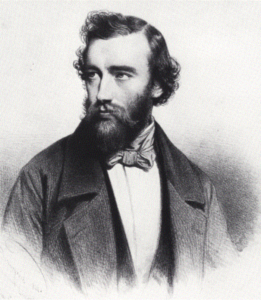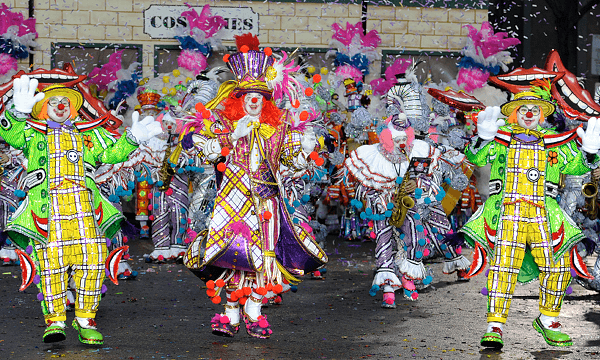History of the Saxophone
In 1846, a Belgium man by the name of Adolphe Sax developed one of the most influential instruments in today’s musical realm. This instrument would prove to be the definitive middle ground between powerful woodwind instruments and adaptive brass instruments. It filled the void found in classical orchestral music, provided power to marching bands, and helped shape the sound of jazz. This instrument, of course, is the saxophone.
 Adolphe Sax began developing his new instrument by 1840. The interest in his craft was derived from watching his father, who was the original chief instrument maker for Belgium. However, Adolphe would soon surpass his father in skill and creativity. At the age of fifteen, he successfully crafted a clarinet and two flutes out of ivory. This feat was said to be impossible, but he managed to complete this task before he would have been able to apply for a driver’s license in present day America.
Adolphe Sax began developing his new instrument by 1840. The interest in his craft was derived from watching his father, who was the original chief instrument maker for Belgium. However, Adolphe would soon surpass his father in skill and creativity. At the age of fifteen, he successfully crafted a clarinet and two flutes out of ivory. This feat was said to be impossible, but he managed to complete this task before he would have been able to apply for a driver’s license in present day America.
By 1841, he had his first working model of what would become the saxophone. The initial name he gave to his new instrument was the bass horn. The French papers had a different idea, however. They decided to name it after him and called it le saxophone, which is where the modern day name, saxophone originated. He quickly applied for and received a patent for his brand new saxophone.

This patent did not simply include one version of it either. All in all there were 14 versions of this instrument that ranged from the sopranino all the way to the contrabass. It allowed for a more varied sound that could be used in multiple types of bands such as concert or military. In order to promote his new instrument, Adolphe Sax ordered a “battle of the bands” of sorts to demonstrate the saxophone’s superiority. His group of musicians that used it won hands down.
Unfortunately, his plan backfired.
People were skeptical of the new kid on the block and began to resent Sax. They found him overly confident and arrogant, but all he was trying to do was introduce a new instrument to create fuller sound to military bands and orchestral music. People didn’t buy it. Musicians and manufacturers refused to use his saxophone, which prevented it from being played in an orchestra — Sax’s original plan for this instrument.
Luckily, the beautiful sounds produced by this lovely instrument grew on the ears of composers and conductors. Slowly they began to incorporate it more and more into their musical writing. Its versatile sound can be heard in operas and marching band compositions alike. However, it was the beginning of the jazz period that really brought on the golden age of the saxophone.
 Artists like Charlie Parker and John Coltrane helped make it the most popular woodwind solo instrument for jazz. Both of these musicians had distinctly different sounds. The individualized sound is a result of various mouthpiece materials and structures, reed hardness, and the musicians mouth position. For jazz musicians, the mouthpiece was modified so the instrument would be louder.
Artists like Charlie Parker and John Coltrane helped make it the most popular woodwind solo instrument for jazz. Both of these musicians had distinctly different sounds. The individualized sound is a result of various mouthpiece materials and structures, reed hardness, and the musicians mouth position. For jazz musicians, the mouthpiece was modified so the instrument would be louder.
Saxophone manufacturing and design is still changing. Since popularity has grown within the last few years, saxophones with differing dimensions and flares have been produced. More parts are now removable and enable easier maintenance. As developments in technology and craft continue with this instrument, quality and sound continue to improve.















